| Botanical Name |
|
| Family |
Fabaceae - The legume and pod-bearing family. (Pea & Bean Family) |
| Pronunciation |
boe-HIN-ee-uh gal-PIN-ee-eye |
| Common Name(s) |
English: Pride of De Kaap; Lowveld Bauhinia
Afrikaans: Vlam-van-die-vlakte; Beesklou-klimop
IsiZulu: Umvangatane Usololo
Sesotho sa Leboa: Motshiwiriri
|
| Plant Group |
- Shrub A woody plant of relatively low height, having several stems arising from the base and lacking a single trunk; a bush.
|
| Plant Size |
- Large
| Tree | 18m to 25m |
| Shrub | 3m to 4m |
| Perennial/ground cover | 75cm to 1m |
| Bulb | 80cm to 1.2m |
| Succulent | 1m to 1.5m |
|
| Position |
- Sun The area is in full sun for all or most of the day, all year round.
|
| General Information |
- Deciduous to Semi-deciduous In warmer areas a deciduous plant may not lose its leaves during winter at all, or may lose its leaves for a very brief period, or may only lose part of its foliage.
- Drought Tolerance: High The plant is well adapted to arid conditions; it can survive long periods of drought and high temperatures without extra water.
- Frost: Half-hardy The plant is able to survive low temperatures and some frost but requires protection against severe frost.
- Water Wise Plant species originating from low rainfall regions that require less water to survive and thrive than other plant species.
- Wind Tolerant Plants able to withstand the effect of strong winds.
|
| Specific Information |
Although Bauhinia galpinii is endemic to moister bushveld regions, it has adjusted exceptionally well to Eastern Cape conditions. This said, it admittedly does not flower as intensively as it does in its native habitat. I have found this species exceptionally drought and wind tolerant. Whether pruned as a small tree or large shrub, this species will require space to grow, making it unsuitable for small gardens. Unpruned it can be encouraged to clamber over a structure, providing shade, or be left to scramble in a hedgerow or shrub border. In colder areas it will lose some or all of its leaves.
|
| Ad Break |
|
| Flowers |
| Description |
Eight spade-shaped petals about 8 cm across.
|
| Season |
- Summer to Autumn Plants will seldom bloom for the entire season as given in the list, but should flower during a period within these parameters.
|
| Colour |
|
| Growth Rate |
- Fast Specifying growth rate can be very misleading as there is considerable variation of growth rate depending on type and species of plant, available water, supplementary feeding, mulching and general care, as well as the plants suitability and adaptability to the garden environment.
|
| Plant Uses |
- Accent or Focal Point A plant used to attract the attention because of its colour or form.
- Attracts bees, butterflies or other insects This plant attracts insects which can be food for birds or other creatures in your garden.
- Attracts Birds This plant will attract birds.
- Border A strip of ground, at the edge of a driveway or path in which ornamental plants or shrubs are planted.
- Boundary A plant useful for planting around the edges of the property to form a green or colourful backdrop, an impenetrable hedge, to hide walls or create privacy.
- Container Trees, shrubs and ornamental species that can adapt to growing in a restricted environment.
- Hedge Suitable trees or shrubs planted relatively close together so that the branches intertwine to create a barrier. This can be formal – the plants are regularly trimmed to produce a neat shape, or informal – the plants are left to themselves to create a natural hedgerow.
- Screen A tall hedge of suitable plants planted closely together and used as a windbreak, to block a bad view, to separate parts of the garden or as a backdrop.
- Suitable for coastal gardens Plants adapted to dry, sandy soil, forceful wind, limited rainfall and intense sunlight.
- Wild Garden An indigenous garden planted for the benefit of wildlife and birds. Provides food, water, a variety of mini-biomes and no poisonous chemicals are used.
|
| Distribution and Habitat |
Northern Kwazulu-Natal, Mpumalanga, Limpopo and North West, as well as Swaziland, Zimbabwe and Mozambique, in moist bushveld
|
| Planting Suggestions |
Plant Bauhinia galpinii in well-drained soil and protect from frost for two or three years if necessary. Plant with a good dose of compost and water occasionally for faster growth.
|
| Lorraine's Garden Notes |
Bauhiania galpinii can be murderously pruned and will bounce back very quickly as is evidenced by the last two images above.
|
| Medicinal Uses |
Traditionally the long flexible branches of this tree were used for weaving baskets and constructing roof trusses for huts.
|
| Ad Break |
|


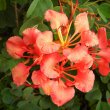

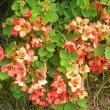
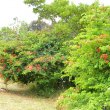
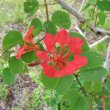
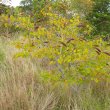

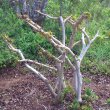
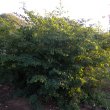


Comments
Baubinia Galpini
I would like to buy the abovementioned trees but I am not able to find a nursery who do have it in stock. Could you perhaps advise where I can find other indigenous nurseries in either Mpumalanga or Gauteng. I stay in Witbank and had a beautiful tree at my previous house.
Thank you
Bauhinia galpinii
Hello Rina
I am surprised that this shrub is not available as it is indigenous to Mpumalanga. Perhaps the nurseries in your area do not keep it because (if I remember correctly) the frost in the Witbank area is quite severe. I imagine it would have to be kept in a very protected position. To find nurseries in your area, search either Gauteng or Mpumalanga, followed by: indigenous plant nurseries. You can them email or phone those that are within range. Should you be unable to find a plant, consider planting from seed. They grow pretty fast and look really good in a container.
Discuss this plant
Share knowledge, ask a question or give an experience.